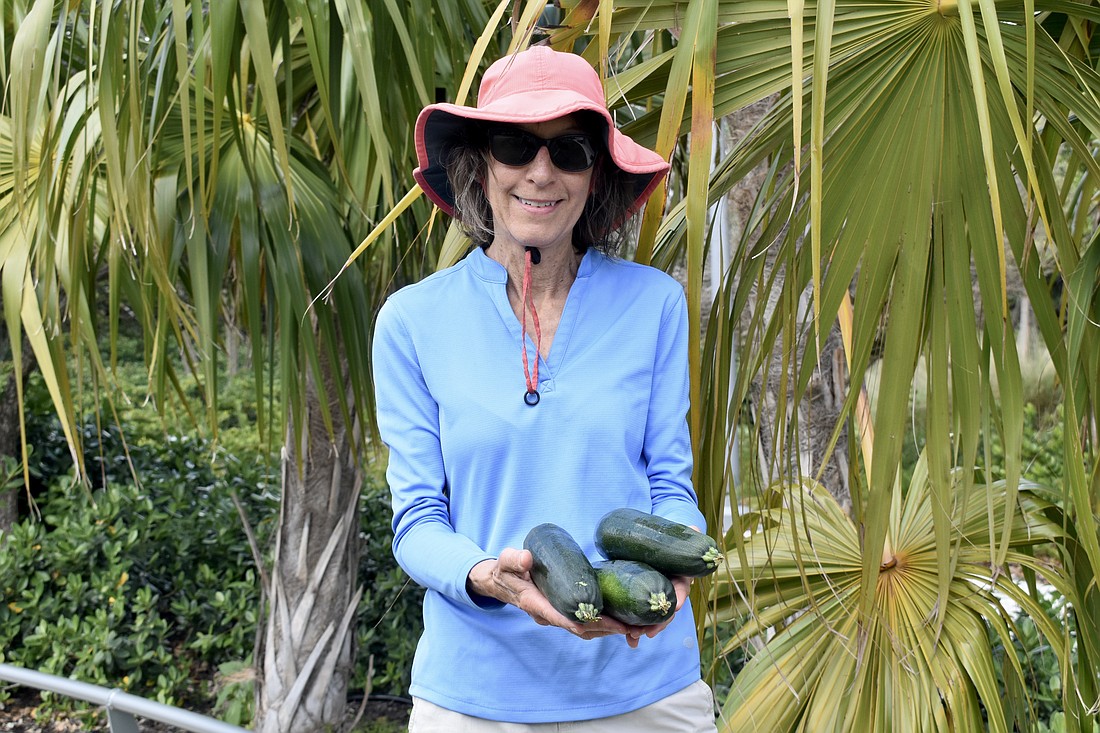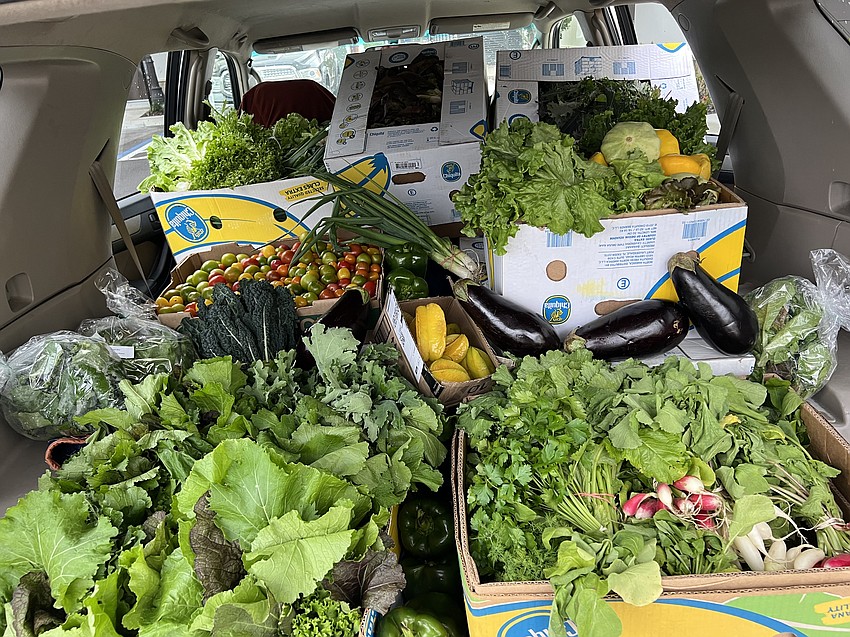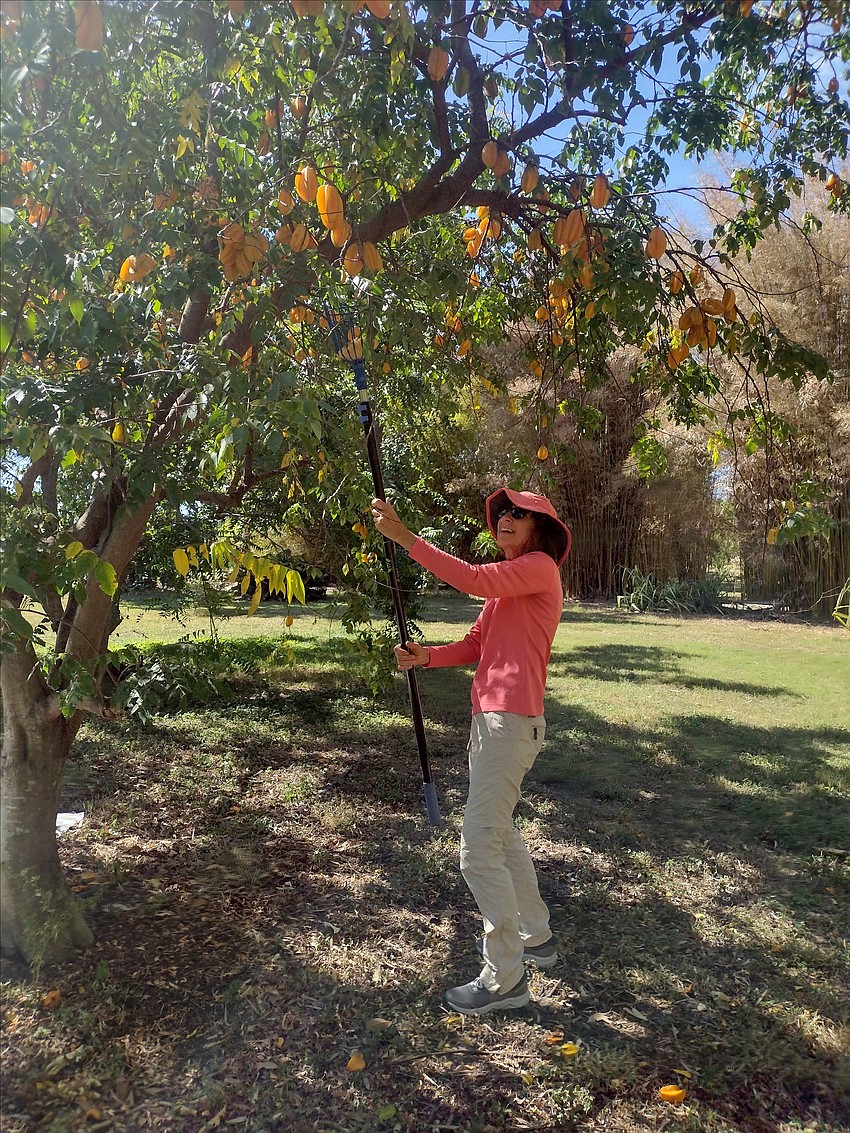- December 26, 2024
-
-
Loading

Loading

Browsing the stands of a farmers market, you’ll find a feast for the eyes, with produce of many varieties set out on display.
But a great deal of that food will never make its way into stomachs, according to Joyce Norris, executive director of Community Harvest SRQ.
Food vendors stock their stands with extra produce they do not plan to sell, something that is necessary to attract customers and remain competitive with other sellers, she said.
With the help of volunteers at organizations like Community Harvest SRQ, she hopes to turn the tables — and fill plates.
Rescuing produce that would otherwise go to waste has always been the focus of the organization, which announced its decision in early March to rebrand from its original name of Transition Sarasota.
That name was established by Don Hall when he founded the organization as a branch of Transition Network, a national organization that aims to transition from fossil fuels to increase sustainability and self-sufficiency, in 2010.
The new name, Norris said, works to more clearly convey the work the organization, an independent nonprofit as of 2015, performs in Sarasota, including its recent initiatives of working with farmers markets and picking fruit from the backyards of local residents.
It was due to a grant from the Charles & Margery Barancik Foundation that the organization was able to create the Farmer’s Market Produce Recovery program, something Norris was inspired to establish after she visited a market and saw fresh produce being loaded into a truck to either be composted or fed to animals.
As of the program’s founding in November of 2022, the organization has rescued 15,000 pounds of farmers market products.

“It’s opened up a whole new layer of partnerships with food banks and food pantries, people serving meals to people in need, like the Salvation Army’s program, so it’s really been exciting,” Norris said.
The nonprofit partners with vendors, who will fill boxes from Community Harvest SRQ, just before the closing of the markets, with any items they cannot use.
So far, the nonprofit has worked with the Philippi Creek, Lakewood Ranch and Englewood farmers markets.
“(Vendors) don’t want to take things back to the farm. It’s just extra work for them,” she said. “And also, they spent all this time, money and energy growing something and they’re thrilled to see that people are enjoying and eating it, so it’s been a win-win all the way around.”
When the organization was starting out, it focused on gleaning, or harvesting leftover produce.
But Hurricane Ian left many farms damaged, with crops reduced and fruit trees lost, which meant that the amount of gleaning that was needed in the community was reduced.
They’ve since begun exploring another arena of leftover produce that is found right in residents’ backyards.
As of 2021, they have operated the Suncoast Fruit Rescue.
Residents who have an abundance of fruit they cannot use for reasons such as being physically unable to harvest it or being too busy to do so, are invited to sign up their trees.
The last summer, for instance, saw an abundance of mango trees and star fruit.

Volunteers will head out to pick the fruit, or pick up fruit harvested by the owners if they prefer to pick it themselves, before taking it to a food pantry.
“We’re keeping it directly out of the landfill because all of this fruit that would be raked up out of a backyard, gets tossed in the trash can,” Norris said.
However, that doesn’t mean there’s anything amiss with the product. The taste is actually better than what you’d expect from your local supermarket, she said.
“It’s better, the taste is unbelievable,” she said. “If you’re at the food pantry picking up a mango that was literally on the tree that morning, it’s unbelievable. You cannot match the taste.”
When volunteers are collecting produce, she offers a simple rule for judging its quality.
“My advice to the volunteers is if you don’t want to eat it, don’t put it in the box,” she said.
There’s one exception to that rule that volunteers must consider.
Some fruits and vegetables, while they may look unappealing due to issues like being misshapen or the wrong size, are actually just as worthy of the food pantry shelf as any other.
“We love those. We’ll take them in a heartbeat,” she said. “They call them ugly fruit and vegetables, but I’d like to say they’re cosmetically challenged.”
All produce, which has a shelf life of a few days, must be moved quickly to a predetermined location, as the organization does not have the means to refrigerate it during transportation.
She said since the start of the program, Community Harvest SRQ has collected over 5,000 pounds of fruit, with 2,300 just last summer— or, as she likes to say, “as much as a buffalo weighs.”
Every year, she said, the amount collected is growing as more people learn of the program and sign up.
Although Community Harvest SRQ has also performed some rescue of packaged food, its focus is on produce.
Norris often hears that food banks, and by extension food pantries, become low on produce in the summer months when farmers stop growing.
“It’s an incredibly different type of food in that it’s fresh, healthy food, it’s not been packaged, and that’s very expensive for people to buy sometimes and more difficult for the food pantries to get,” she said. “So, we’re really filling a niche that isn’t being filled otherwise.”